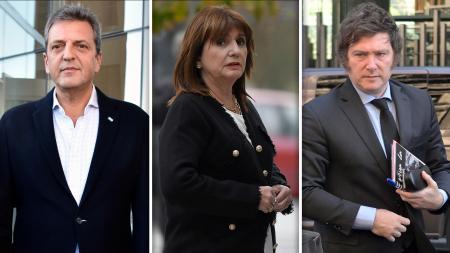It has been 4 years since Alberto Fernandez took office as the President of Argentina
Argentina’s President Alberto Fernandez at the United Nations General Assembly in New York on September 19, 2023. (Credit: Adam Gray/Getty Images)
For years, Argentina had no rest. together with Economies And this population The largest in Latin America, and A Past history of progress and development, In recent decades, the South American country has gone through economic problems and periods of stagnation and political instability, and each of the recent governments has felt it in the polls.
The current president Alberto Fernández, elected in 2019, is no exception: suffering from very high inflation – among other economic problems – and low popularity, he decided long ago not to seek re-election in the upcoming presidential elections. The force, the Frente de Todos coalition (now renamed Unión por la Patria), faces a fierce electoral battle to retain executive power.
What exactly happened during these busy four years for the historic agricultural producer, with the Covid-19 pandemic and one of the worst droughts on record in the country? How did Fernandes achieve this position?
Alberto Fernandez’s win
When former President Cristina Fernández Kirchner – the icon of recent Argentine politics, loved and hated – announced in mid-2019 that the candidate of her political forces was Alberto Fernández, one of her former collaborators turned critic, the surprise was felt throughout. Country.
Fernández, who has extensive experience as an official in previous governments, until now was not considered a popular candidate or a presidential figure, and in recent years has even been seen as one. Enemy of Fernandez de Kirchner, In whose government he remained until his resignation in 2008.
But with his rise as the candidate of the Peronist coalition of the Frente de Todos, Alberto Fernández has helped consolidate a more moderate profile for the coalition, shedding Cristina Fernández de Kirchner’s bad image among the majority of the electorate. He had to win the elections against then-President Mauricio Macri, who was seeking re-election against a backdrop of recession and rising inflation.
It was a successful electoral strategy, but it brought to power a different president, with less real power than expected and the usual conditions of grand coalitions, an unusual phenomenon in the country.
Argentina is accustomed to strong leadership and at the same time leaders of their own political forces. This is not the case for Fernández, who heads the coalition led by Cristina Fernández de Kirchner – who became vice president – and includes other leaders such as Sergio Massa.
Read the full post here.


:quality(85)/cloudfront-us-east-1.images.arcpublishing.com/infobae/BH6NLAQGXJGADFWTENBUV7Z7RQ.jpg)
:quality(85)/cloudfront-us-east-1.images.arcpublishing.com/infobae/3GK63ATFOMFAYNUAQKUL4WUJFM.jpg)

:quality(85)/cloudfront-us-east-1.images.arcpublishing.com/infobae/SJ35ZLSJ5NB4BWVRJPSK74P7AQ.jpg)